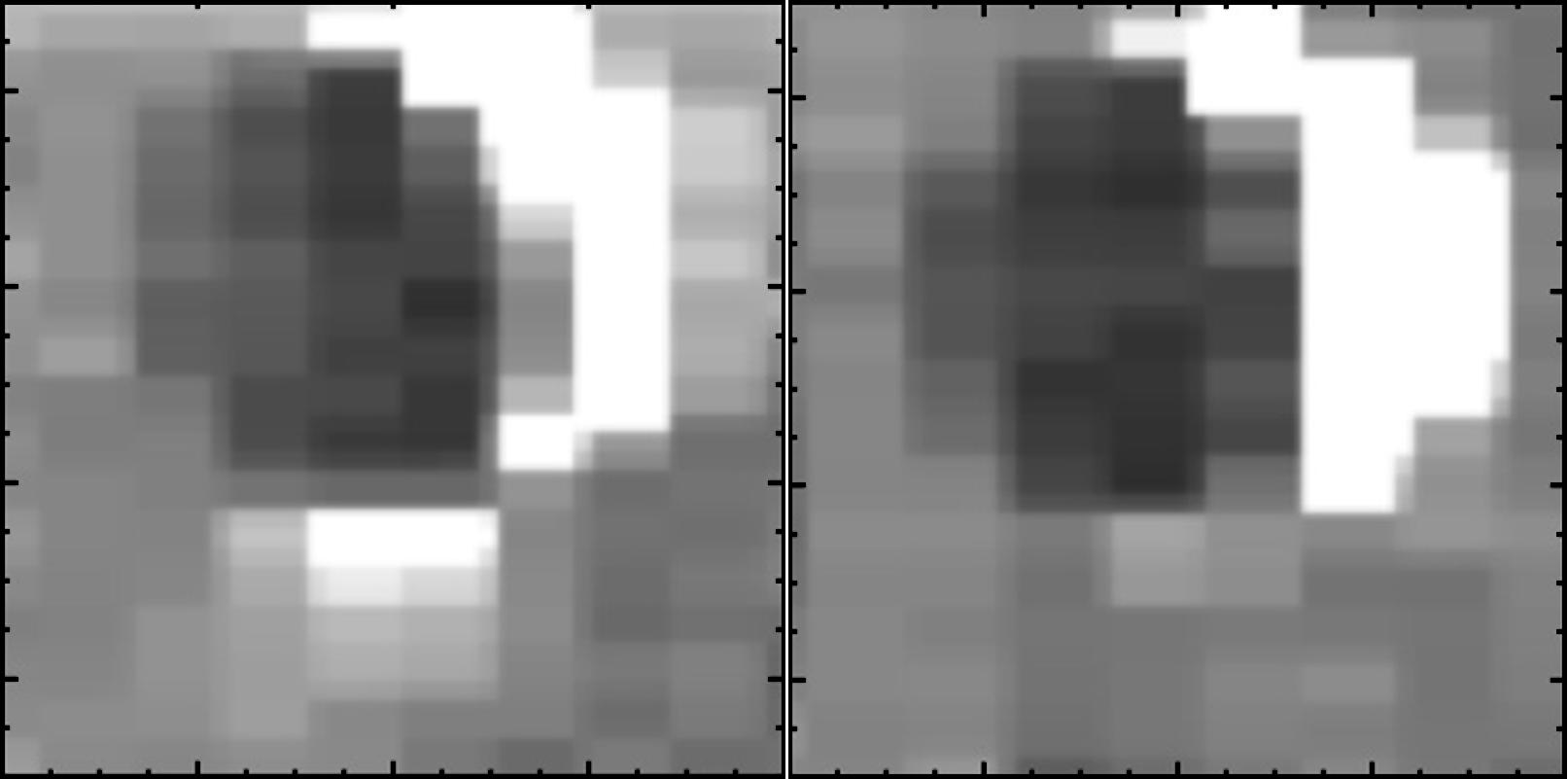Enceladus ‘On’ and ‘Off’

| PIA Number | PIA17039 |
|---|---|
| Language |
|
This set of images from NASA's Cassini mission shows the difference in the amount of spray emanating from Saturn's moon Enceladus. The images from Cassini's visual and infrared mapping spectrometer show that Enceladus sprays the most when it is farthest away from Saturn in its orbit (left) and sprays the least when it is closest to Saturn (right).
Water ice and organic particles gush out of fissures known as "tiger stripes" at Enceladus' south pole. Scientists think the fissures are squeezed shut when the moon is feeling the greatest force of Saturn's gravity. They theorize the reduction of that gravity allows the fissures to open and release the jets.
Scientists correlate the brightness of the Enceladus plume to the amount of solid material being ejected because the fine grains of water ice in the plume are very bright when lit from behind. Between the dimmest and brightest images, they detected a change of about three to four times in brightness, approximately the same as moving from a dim hallway to a brightly lit office.
This analysis is the first clear finding that shows the jets at Enceladus vary in a predictable manner. The image on the left was obtained on Oct. 1, 2011. The image on the right was obtained on Jan. 30, 2011.
A related image, Squeezing and Releasing Enceladus, shows where these different brightness levels were detected in Saturn's orbit.
The Cassini-Huygens mission is a cooperative project of NASA, the European Space Agency and the Italian Space Agency. The Jet Propulsion Laboratory, a division of the California Institute of Technology in Pasadena, manages the mission for NASA's Science Mission Directorate in Washington. The Cassini orbiter and its two onboard cameras were designed, developed and assembled at JPL. The imaging team is based at the Space Science Institute, Boulder, Colo.
For more information about the Cassini-Huygens mission visit http://saturn.jpl.nasa.gov or http://www.nasa.gov/cassini . The Cassini imaging team homepage is at http://ciclops.org .
Credit: NASA/JPL-Caltech/University of Arizona/Cornell
